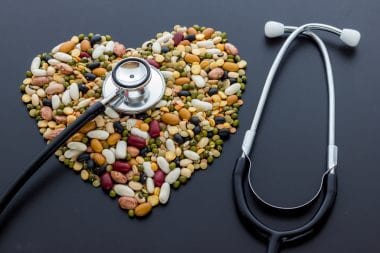The human body is truly fascinating. Every process is meticulous while every component plays some sort of key role. The aspects of the body that people might deem insignificant are actually essential and crucial in sustaining an overall good state of health. Of course, the most efficient way to care for your body is through your diet. Believe it or not, plenty of delicious foods that you probably enjoy eating already are fundamental portions of the diet, including those that are rich in iron.
Iron is a nutrient that your body must have at all times. Though most have grasped that simple concept, they are still unsure as to why the body needs iron. On one hand, people believe that iron has to do with the formation of blood cells while the other portion simply believes that this nutrient is found in all foods, a factor that leads them to think that they are receiving it naturally. Though iron is in plenty of tasty foods, it is important to understand why the human body needs this nutrient to begin with, which foods contain adequate amounts, and just how much of this staple that you should be eating. With all of this in mind, it is time to ditch the supplements and get ready to be surprised at which delicious fare contains all of the iron you could ever need.
The Importance of Iron: What You Possibly Do Not Know
This nutrient is responsible for the production of hemoglobin in red blood cells. Essentially and to eliminate the concern of delving too deep into biology, hemoglobin is the component of blood that captures oxygen in the air, holds it in the cells, and carries it throughout the entire body along with other essential vitamins and nutrients. Without sufficient hemoglobin, the body is deprived of oxygen, a factor that can have detrimental circumstances for your overall sense of health.
Two-thirds of the body’s iron is for hemoglobin production which further supports how crucial the nutrient is. Without sufficient hemoglobin, the body goes through an oxygen deficit. This downfall results in a multitude of health concerns and symptoms, including:
Each of these symptoms plays a part in destroying the body by weakening it. When your body is weak, free radicals are easily able to enter it in order to make it weaker and ill. The failure to treat an iron deficiency can result in more severe actions such as fainting, loss of memory, and instability while walking.
How Much Iron Should You Be Consuming?
The consumption of iron is dependent on plenty of factors, including age, sex, weight, and a general state of health. Typically, young children should be consuming around 10 milligrams of iron daily due to the fact that their bodies are growing rapidly. Adults who are in fairly good health should be consuming around 10 milligrams of iron each day as well, while a woman who is menstruating or nursing should be consuming approximately 15 milligrams per day. Those who are pregnant are suggested to have around 30 milligrams of iron daily to ensure the proper development of the child.
It is important to know the amount of iron you are consuming each day to not only ensure that you are receiving enough but to guarantee that you are not eating too much. Like everything, too much iron is incredibly dangerous. Understanding the crucial balance is dependent on understanding iron-rich foods and the amounts of these foods you should be incorporating into your diet each day. If you need help determining how much iron you should consume, calculate your body mass index and later discuss a course of action with your physician.
Foods Rich in Iron: What Else Do They Offer and How Much Should You Consume?
Red Meat
Three and a half ounces of red meat contains 2.7 milligrams of iron. Though this does not compose your entire daily serving, it is the perfect amount to be paired with another iron-rich food. Additionally, this food is high in heme iron, which converts directly into hemoglobin in the system. Doctors recommend that those who are anemic eat plenty of red meat and studies suggest that those who eat this meat often are less likely to have an iron deficiency. Aside from iron, eating red meat during the week is great for obtaining servings of B vitamins, selenium, zinc and, of course, protein.
Liver
This is perhaps the easiest way to receive close to a daily serving of iron simply because three and a half ounces of beef liver contains 6.5 milligrams of iron. Liver and other organ meats are also high in copper, B vitamins, zinc, protein, and vitamin A.
Oysters
Who does not love a fresh oyster? Few people can resist this treat, a reality that is great for maintaining a healthy system. Three ounces of oysters contains over 3.5 milligrams of iron. Oysters are low in calories and high in vitamins and nutrients, so eating enough of them to receive a full serving of iron is ideal. This shellfish also contains heme iron, further validating the importance to incorporate these into your diet.
Sardines
Not many people enjoy these small fishes, but that is often because they are unsure how to cook with them. Perfect when combined with garlic and oil, sardines are a simple way to obtain iron as they are also low in calories. Three ounces of this fish contains nearly 3 milligrams of heme iron. They are also high in potassium and low in fat.
Lentils
Part of the legume family, lentils are able to be incorporated into meals in so many ways. Whether they are put in a soup, sprinkled on top of fish for texture, or steamed with rice, they are diverse and full of iron. In fact, one cup of lentils equates to a whopping 6.6 milligrams of iron. They are also high in vitamins A, B, and C.
Beans
What can beans not be incorporated into? Few things are unable to work well with beans, so they are a great way to receive your iron as well as your daily fiber. Depending on the bean, one cup can provide the diet with 3 to 7 milligrams of iron. Though beans are non-heme, they are less damaging to the body and easier to regulate within the system.
Spinach
This is considered a superfood and it is no wonder why. In three and a half ounces of spinach, there are nearly 4 milligrams of non-heme iron. Spinach has a tendency to wilt, so going heavy on the portions is not a problem at all. Of course, this leafy green is full of vitamin C, the vitamin responsible for boosting the ability to absorb and retain iron.
Dark Chocolate
If you are going to splurge on chocolate, it should absolutely be dark. One ounce of dark chocolate contains 3.3 milligrams of iron. Dark chocolate is also rich in probiotic fibers, antioxidants, copper, and magnesium. In order to reap these benefits, though, you must consume dark chocolate that is at least 70% cocoa.
Pumpkin Seeds
These are incredibly healthy and diverse when it comes to cooking capabilities. Whether they are roasted in the oven or sprinkled over a healthy dessert, pumpkin seeds are rich in non-heme iron. One ounce contains 4.2 milligrams. These are low in calories, so feel free to load up in order to receive your full daily amount in one handy snack.
Soybeans
A half of cup of soybeans contains 4.3 milligrams of non-heme iron. They are also high in copper, another nutrient responsible for blood cell formation. Of course, these are nutrient dense per calorie, so it is simple to double the serving size for maximum nutrition.
Turkey
This is perhaps the leanest meat of all. Though physicians will recommend eating natural and cooked turkey over processed lunch meat, you are able to receive nutrition from each. In three and a half ounces of cooked turkey, there are 2.3 milligrams of heme iron. The low amount of calories found in turkey makes it the perfect meat to splurge on, however, and the subtle flavor makes it easy to stuff with spinach or to stew with beans or lentils to receive maximum iron.
Broccoli
One cup of broccoli contains 1 milligram of iron, but the high amounts of vitamin C found in this vegetable make it perfect for further iron absorption and retention in the system. Of course, broccoli is low in calories and can be eaten either raw or cooked, so eating as much as you would like to receive more iron is alright.








Reply